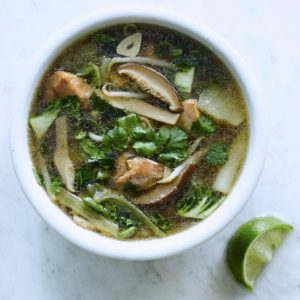What Is An Adaptogen
Adaptogens have been all over the news lately, especially in regard to wellness, purporting to be a magic elixir. They can be found in supplements, powders and tinctures. But what is an adaptogen? By definition, in herbal medicine, an adaptogen is a natural substance (non toxic plant) considered to help the body adapt to stress and to exert a normalizing effect upon bodily processes. A study in the Journal Pharmaceuticals, has shown great promise for certain adaptogens, more specifically: Rhodiola rosea, Schisandra chinensis and Eleutherococcus. There is promise in regard to stress, anxiety and immune response. It is extremely important to note that studies on adaptogens have NOT been done on humans, only on animals and human tissue samples, which do not respond the same way that human bodies do. Should we all run out and start buying these supplements? Not so quick. First of all, supplements are not regulated by the FDA, so be very careful when purchasing supplements. If you are considering trying one of these supplements, see if they have a USP mark (The United States Pharmacopeia), which does set standards for dietary supplements or NSF certification, which provides standards of development. You want to make sure you are actually getting the plant you are paying for. I recommend if interested in trying this trend, get it through herbs that you can add to your food or drinks yourself-beware, most do not taste good on their own. Some good sources of adaptogens include:
- Asian Ginseng
- Reishi mushrooms
- Ashwagandha
- Rhodaiola
- Indian Goosberry
- Holy Basil
- Cordyceps
You can add these herbs, plants or mushrooms to teas, smoothies or soups. It is very important to note that herbal supplements can interact with prescription medications and may have side effects, so whether you buy a pre made supplement or make your own blend, ALWAYS talk to your physician first to be safe. Adaptogens can boost your health, but by no means are they a cure all or magic bullet.
Asian-Inspired Chicken Soup
From: EatingWell Magazine, March/April 2010
What is so obliging about this hearty chicken soup is that you can add any vegetables that suit your fancy: napa or Savoy cabbage, mushrooms, Chinese broccoli, broccolini, onions, leeks, mustard or turnip greens, celery or whatever tickles your bonnet. Just be sure that you don’t overcook the vegetables. Spice it up with Asian-style chile sauce, such as sriracha, and/or serve the soup over noodles to make it a more substantial main dish.
Ingredients
-
- ½ ounce (about ½ cup) dried Reishi or mixed dried mushrooms
- 3 cups boiling water
- 1 tablespoon peanut oil or canola oil
- 2 cups diced onion
- 3 cloves garlic, thinly sliced
- 6⅛-inch-thick slices peeled fresh ginger
- 6 cups reduced-sodium chicken broth
- ¼ cup reduced-sodium soy sauce
- 1 2-to-3-inch cinnamon stick
- 1 whole star anise
- 1 teaspoon freshly ground pepper
- 2 pounds boneless, skinless chicken thighs, trimmed and cut into 1-inch pieces
- 1 bulb fennel, cored and cut into 1-inch pieces
- 8 scallions, whites cut into 2-inch pieces and greens chopped, divided
- 1 pound bok choy, preferably baby bok choy, white stems sliced lengthwise and greens chopped, divided
- 2 cups (4 ounces) mung bean sprouts (see Note)
- ½ cup chopped fresh cilantro
- 2 teaspoons toasted sesame oil
- Lime wedges for garnish
Directions
- Place mushrooms in a heatproof measuring cup and cover with boiling water. Soak for at least 30 minutes or up to several hours. Remove the mushrooms from the water, remove and discard stems (if any) and cut into ⅛-inch slices; set aside. Strain the soaking liquid and reserve.
- Heat oil in a large soup pot or Dutch oven over medium heat. Add onion, garlic and ginger and cook, stirring, for 5 minutes. Pour in the reserved mushroom liquid, broth, soy sauce, cinnamon stick, star anise and pepper. Bring to a boil. Reduce to a simmer and stir in chicken. Simmer for 20 minutes.
- Stir in fennel, scallion whites and the reserved mushrooms and cook for 5 minutes. Add bok choy stems, return to a simmer and cook for 3 minutes more. Stir in bok choy greens and bean sprouts. Cook until the greens are just wilted, about 2 minutes more.
- Discard the cinnamon stick and star anise. Ladle the soup into bowls. Garnish each bowl with scallion greens, cilantro and a ¼-teaspoon drizzle of sesame oil. Serve with lime wedges, if desired.
- Note: Mung bean sprouts (germinated mung beans), often simply labeled “bean sprouts,” are white with a light yellow tip and are thicker than more common alfalfa sprouts.
- People with celiac disease or gluten-sensitivity should use soy sauces that are labeled “gluten-free,” as soy sauce may contain wheat or other gluten-containing sweeteners and flavors.
Nutrition information
Serving size: about 1¾ cups
- Per serving: 257 calories; 11 g fat(3 g sat); 3 g fiber; 13 g carbohydrates; 27 g protein; 79 mcg folate; 76 mg cholesterol; 5 g sugars; 0 g added sugars; 2,920 IU vitamin A; 29 mg vitamin C; 107 mg calcium; 3 mg iron; 789 mg sodium; 831 mg potassium
- Nutrition Bonus: Vitamin A (58% daily value), Vitamin C (48% dv), Folate (20% dv)
- Carbohydrate Servings: 1




